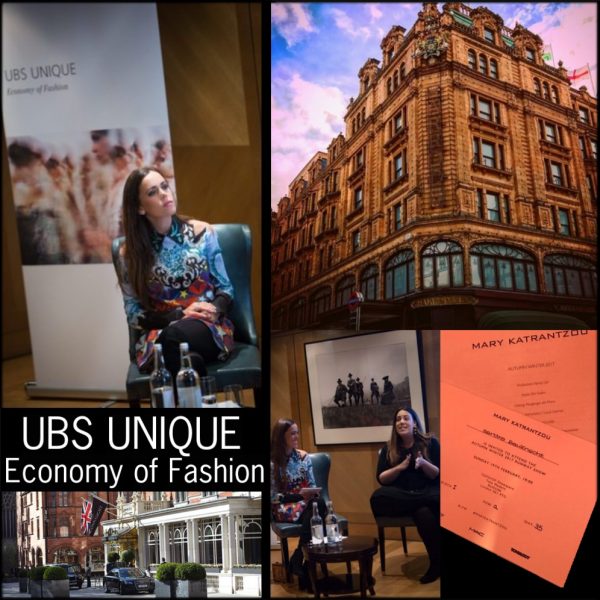
 During the vibrant atmosphere of London Fashion Week, I had the pleasure to participate in a very interesting new project combining the world of finance and fashion: UBS Unique – Economy of Fashion.
During the vibrant atmosphere of London Fashion Week, I had the pleasure to participate in a very interesting new project combining the world of finance and fashion: UBS Unique – Economy of Fashion.
Just as the world around us is changing, the face of wealth is evolving. The global income of women will grow from USD 13 trillion to USD 18 trillion by 2021* – more than China and India’s combined GDP growth and since 2015, women have held 30%** of global private wealth.
As women are looking for a response to their needs, UBS Unique has been created. The aim? To catalyze a long-term change in the financial industry to better serve women and to enable them to make the most of their wealth.
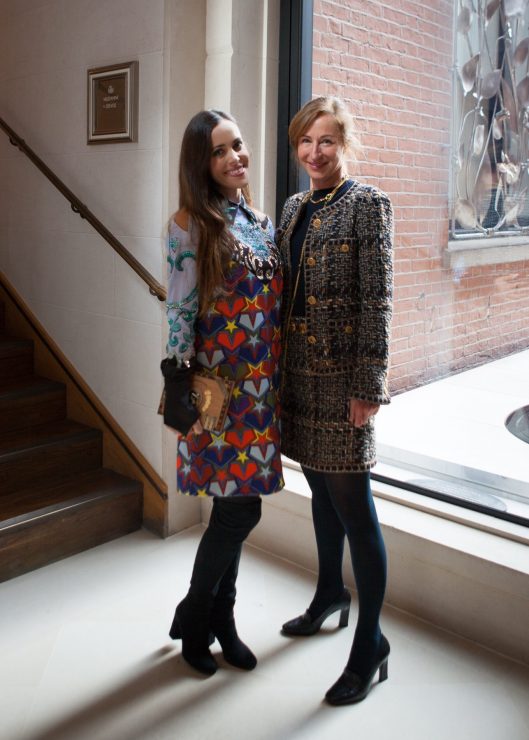 My lovely host, Kathrin Genovese Head Vice Chairmen Office, Global Ultra High Net Worth
My lovely host, Kathrin Genovese Head Vice Chairmen Office, Global Ultra High Net Worth
Therefore a lovely group of female ultra high net worth individuals from all over the world was invited by UBS to London for two inspiring days. The event had it all: shows, talks and insights on how fashion can change the world for the better.
As I thought you might be interested in what I have taken home from UBS Unique, here’s a quick roundup of insights from the event’s speakers.
«The future of fashion will see creativity re-emerge as a key driver to take us from our current crisis state and into a new model for fashion. If we don’t push creativity at every step of the fashion supply chain to find new ways to design, produce, sell, wear and dispose of clothes, then we face a bleak future for fashion.”» – Christina Dean
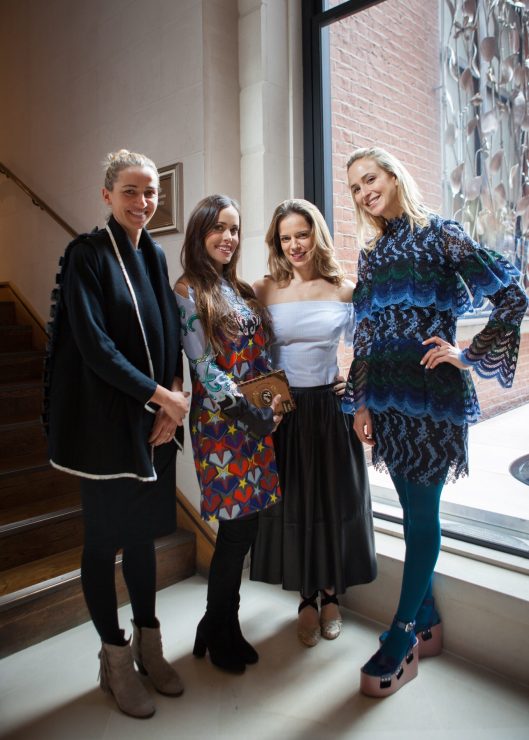 From left to right: Christina Dean, my humble self, Giorgia Caovilla and Elisabeth von Thurn und Taxis.
From left to right: Christina Dean, my humble self, Giorgia Caovilla and Elisabeth von Thurn und Taxis.
The look of love – how will the fashion industry change?
Women should “fall in love with the fact that fashion is a force for good,” says Christina Dean, founder of Redress – an organisation working to reduce waste in the fashion industry. Christina believes fashion’s ethical future is in the hands of young designers and consumers. Or as Elisabeth von Thurn und Taxis describes it vividly, “it’s down to designers to rebel. There’s a lot of pressure on designers to become commercial so it stops creativity. I am anyway bored of all the fashion shows. There are too many.”
Online shopping is definitely an opportunity as emerging designers cannot always afford a retail space. They have a different pricing model. But in terms of sustainability it can cause also problems as people end up buying multiple sizes knowing they’re going to return it.
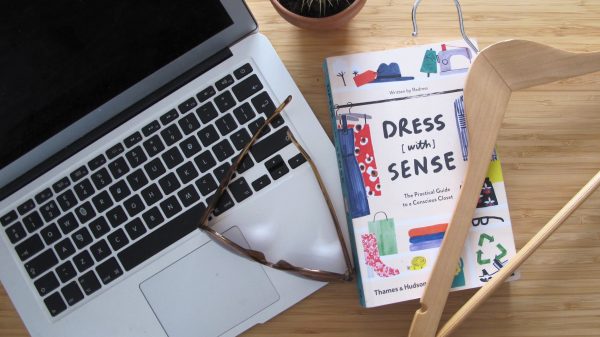 Dress with Sense – the practical guide to a conscious closet by Redress
Dress with Sense – the practical guide to a conscious closet by Redress
How can you play your part in making fashion more ethical?
As I am always promoting, you can easily play your part in making fashion more ethical by buying the things you love and wear them for longer. When shopping, think about the value, not the price. And consider ways you can make sure your investments match your ethics.
You can also donate your quality, branded items with high value to charity Redress for resale.
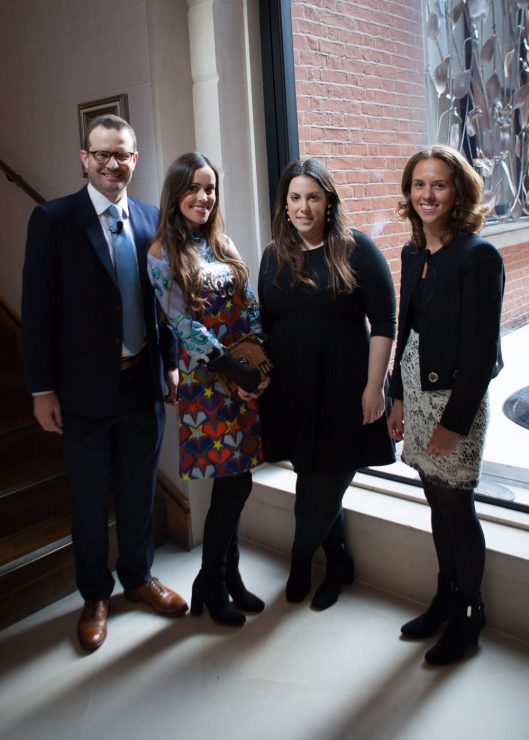 Designer Mary Katrantzou and me framed by UBS key speakers, James Gifford, Senior Impact Investing Strategist, Chief Investment Office, UBS Wealth Management, to the left and Helen Brand, Head of Equity Research, European Luxury Goods, UBS Investment Bank
Designer Mary Katrantzou and me framed by UBS key speakers, James Gifford, Senior Impact Investing Strategist, Chief Investment Office, UBS Wealth Management, to the left and Helen Brand, Head of Equity Research, European Luxury Goods, UBS Investment Bank
A short industry outlook
The top 3 words executives used to describe the fashion industry in 2016*** were: «Uncertain, Changing, Challenging.» But despite the wider economic slowdown last year, fashion has been a key value-creating industry for the world economy. In 2017, a slight recovery is expected to a point where the industry may see some growth next year.
Let’s take China for example. Chinese growth hit a soft patch: a stock market dip and real estate concerns have decelerated chinese growth, and shifted attention to India, Turkey, and other high-growth markets. China’s fundamentals, including growth of the middle and upper classes, remain strong and the government’s new fiscal policies are expected to improve conditions in 2017, but uncertainty remains.
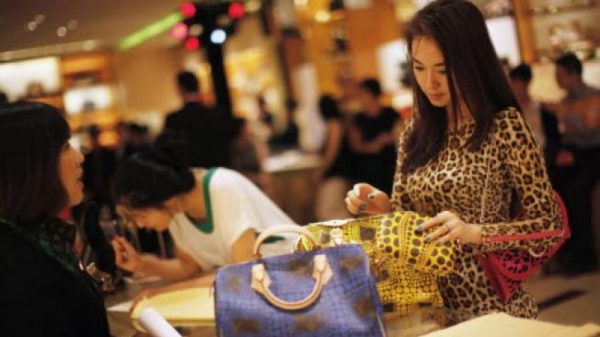 A woman shops in a Louis Vuitton store in Shanghai. © SCMP Photos
A woman shops in a Louis Vuitton store in Shanghai. © SCMP Photos
London-based Helen Brand, Head of Equity Research, European Luxury Goods, UBS Investment Bank, trusts in the mid market and expects “growth going forward to come from the Chines middle class consumer and therefore more at the entry level price points, with more chances for the handbag category compared to watches as many brands still have to strengthen the CHF 2000-5000 offer.“
When you think about China, factors such as pollution, a deteriorating environment, inhumane work conditions in factories, mass production come immediately to your mind. China and sustainability, connecting the dots between economy and ecology seems to be a complex problem. Therefore a valid question was raised during one of the panel discussions: how can we as consumers/potential investors contribute to overcome these issues?
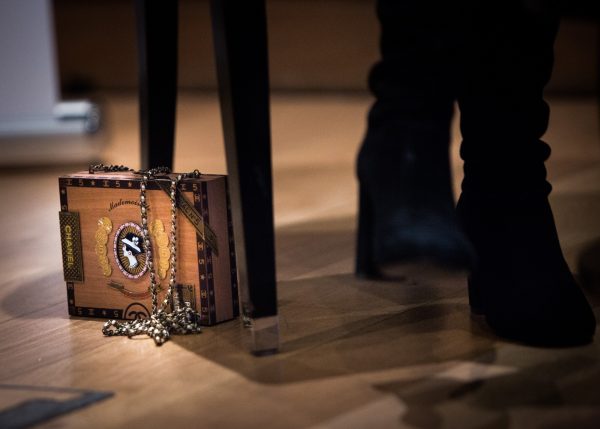
Tailor-made investments – how can you invest ethically in fashion?
What’s impact investing? Put simply, it’s investing in ways that help make the world a better place. And it can make a big difference to the fashion industry, “especially when dealing with problems in supply chains,” says James Gifford, Senior Impact Investing Strategist at UBS. It’s good news for investors, too.
Impact investing is one of the tools that we can use to improve terrible situations such as exposure to slavery and trafficking – lots of brands don’t have full transparency throughout their entire supply chain. Shareholders can take part in helping brands address that. Most critical is the intent – the willingness to change for the good. This impact must be measured with defined performance indexes to make it tangible to all stakeholders of the corporation.
Many investors assume that impact investment is a form of charity. In reality, quiet the opposite is the case. Gifford delivers the facts: two thirds of impact investment funds deliver comparable results to more traditional funds. Generating a financial return is indispensable and sustainable in itself; generated profits are more likely to be re-invested in impact projects and new investors may follow.
How to invest
- Invest in best in class – some great companies that are trying really hard to improve.
- Underweight / overweight the good guys and the bad guys.
- You can engage your fund managers and advisors on this topic as most of them might not have thought about these issues. So having that dialogue can have an impact already.
- Shareholder engagement is where shareholders use their voice to encourage companies to improve their behaviour. This can be done through fund managers or family offices.
- Shareholder engagement can be very effective and you don’t even have to own that many shares to have a voice.
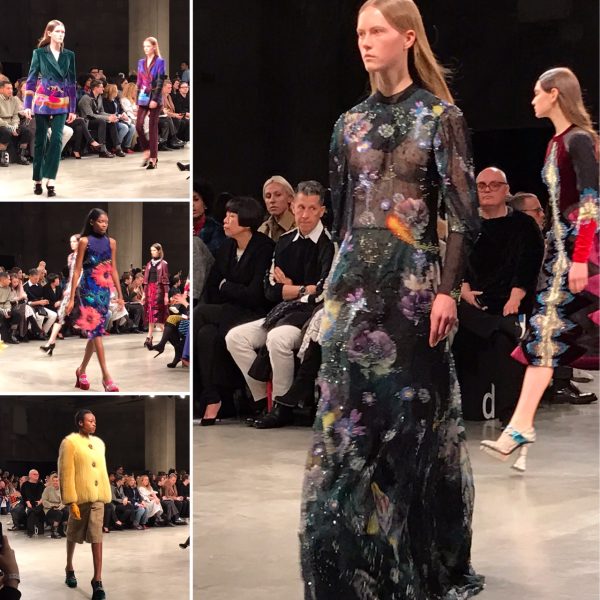 Great show: Mary Katrantzou’s F/W 2017 presentation took place at Tate Modern.
Great show: Mary Katrantzou’s F/W 2017 presentation took place at Tate Modern.
During those two amazing days, we had also the chance to talk to two outstanding designers who both have build up their brand in a breakneck pace. Cherry on the cake was the possibility to experience the excitement of fashion week as guests of Mary Katrantzou and Erdem at their shows.
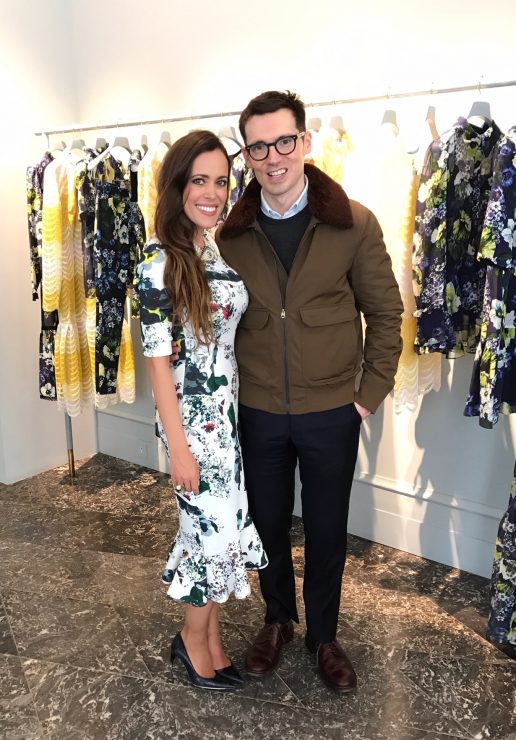 With Erdem in his Mayfair store for a private shopping event during the «Economy of Fashion».
With Erdem in his Mayfair store for a private shopping event during the «Economy of Fashion».
“I don’t believe in fast fashion – I get a kick out of seeing real women wear my clothes on the street,” says Erdem Moralioglu, founder of the designer label ERDEM.
Shaping up – how Erdem Moralioglu built his brand
Since launching in 2005, the brand has become synonymous with versatile and powerful femininity. After studying at London’s Royal College of Art, Erdem started his own company and fashion line at the age of 27. The business took off when Barneys bought his first collection. In 2014, he put his collection online and opened his flagship store in Mayfair in 2015.
Today, ERDEM is sold in over 170 of the world’s most exclusive retailers, including Barneys New York, Bergdorf Goodman, Joyce, Colette, Dover Street Market, Selfridges and Harvey Nichols.
In the beginning of November 2017 his collection for H&M will hit the stores as he is the next designer to collaborate with the Swedish clothing giant (for more info, click here please).
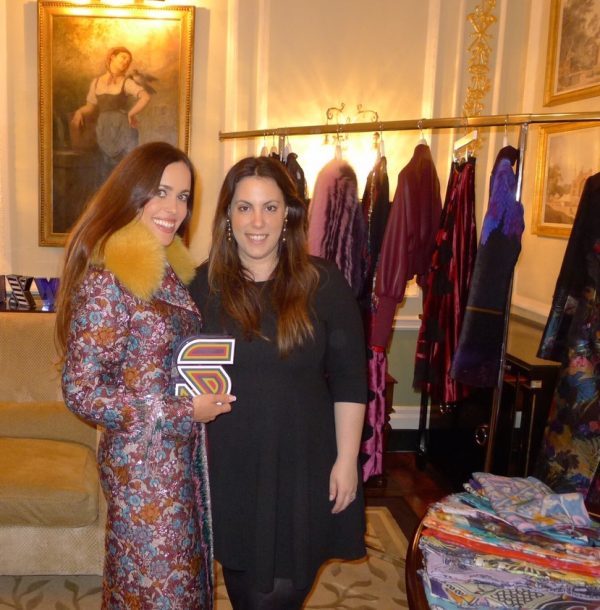 With Mary Katrantzou in the private shopping suite at the at the Connaught Hotel in Mayfair, wearing an amazing coat from her F/W 2017 collection.
With Mary Katrantzou in the private shopping suite at the at the Connaught Hotel in Mayfair, wearing an amazing coat from her F/W 2017 collection.
“Print can be as definitive as a cut or a drape and allows a woman to filter beauty found in design, in a subversive way. All my prints are constructed through digital technology. Digital print allows me to experiment with print in a way that fine art and other methods could not. It opens up a huge spectrum for possibility; I can create possibility out of impossibility, surrealism out of realism and both vice versa,” says Mary Katrantzou.
Pioneering digital prints – how Mary Katrantzou became the fashion world’s darling
Greek-born Mary Katrantzou had an appreciation of applied design from an early age. Having begun training as an architect at Rhode Island’s School of Design, she transferred to Central Saint Martin’s in London to study textiles and finished also with a fashion MA in 2005. Katrantzou shifted her direction from textile design to womenswear with a focus on print as she loved the way printed textiles can change the shape of a woman’s body.
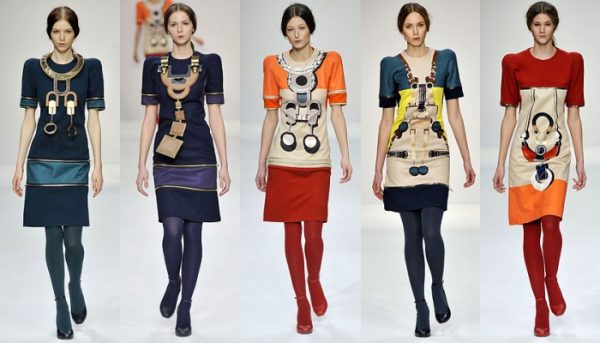 Success from the first moment: Mary Katrantzou’s graduate collection in 2008.
Success from the first moment: Mary Katrantzou’s graduate collection in 2008.
Her graduate collection in 2008 of digital trompe l’oeil prints of oversized jewellery on simple shift dresses served as a counterpoint to the minimalist movement that was dominating the runways at the time. From there, Katrantzou picked up 15 prestigious stockists including Browns, Joyce and Colette. Today she boasts over 250 stockists worldwide. Among the many prestigious awards, she received in her career, she also won the Swiss Textiles Award in 201, which helped her grow her business further. And would she rule out ever taking on an investor? “In the future, who knows,” says Katrantzou. “But true global scale is our ambition.”
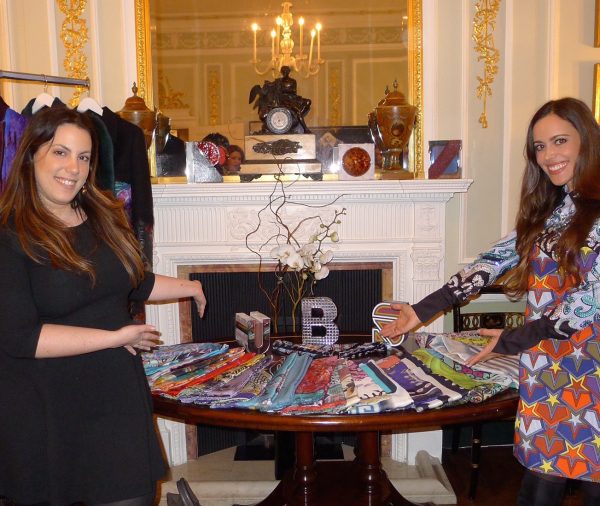 Best of both worlds… fashion and finance.
Best of both worlds… fashion and finance.
I hope that you enjoyed this little insight into the new interactive event Economy of Fashion under the roof of the UBS Unique platform that was a great success. For two days, we received an exclusive insight into the business of fashion of emerging and established designers, disruptive technologies and brands that are making their mark on the industry.
I met amazing ladies from all over the world and it was a pleasure exchanging knowledge while enjoying some fun shopping and great food.
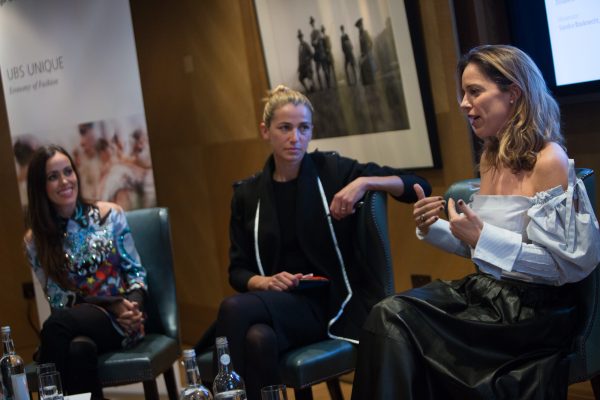
I would love to conclude with a quote from shoe designer Giorgia Caovilla: “The future of fashion will shorten the distance to be able to convey more clearly its message: LET’S HAVE SOME FUN!’”
LoL, Sandra
*Harnessing the power of women investors in wealth management, Ernst & Young LLP, 2016
** Global Wealth 2016: Navigating the client landscape, Boston Consulting Group, 2016
*** Source BoF-McKinsey Global Fashion Survey, September 2016
Photos: © Sam Bowen for UBS, © Sandra Bauknecht, © Redress, © Mary Katrantzou

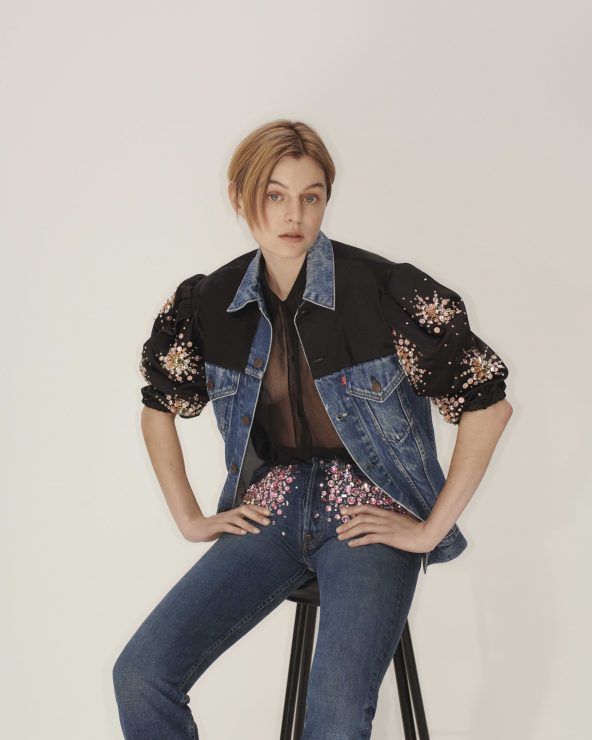




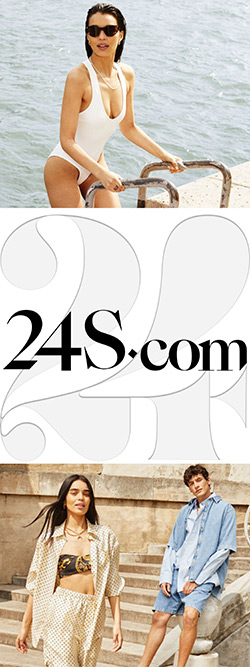






 Gabriela Hearst presented the last look herself.
Gabriela Hearst presented the last look herself.
 The rebirth of Chloé’s Edith bag by Gabriela Hearst.
The rebirth of Chloé’s Edith bag by Gabriela Hearst.

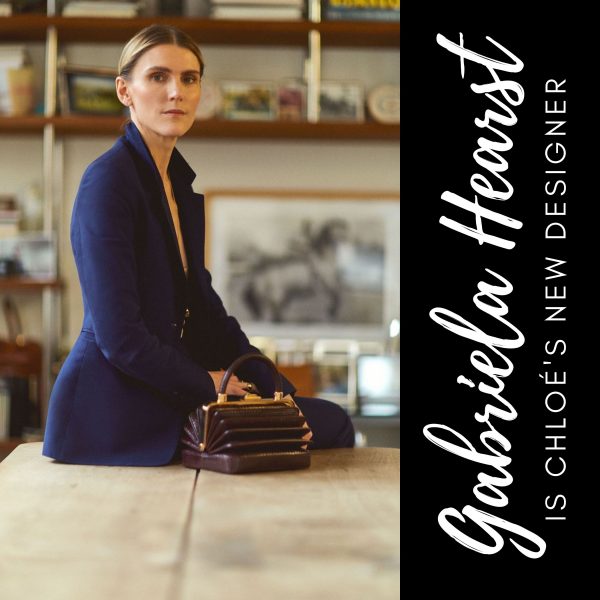
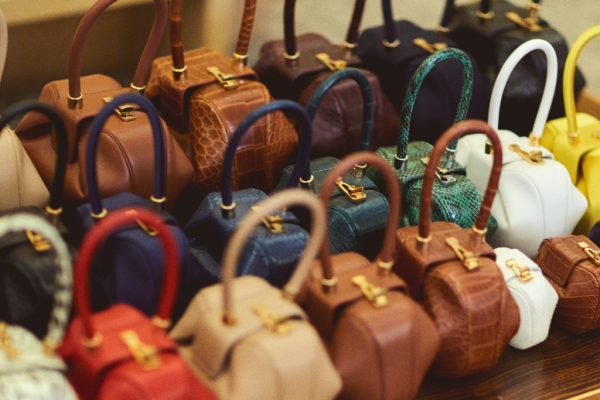 Gabriela Hearst’s famous It-bags have been successful from the beginning.
Gabriela Hearst’s famous It-bags have been successful from the beginning. A true rancher by heart: Gabriela Hearst
A true rancher by heart: Gabriela Hearst  Chloé’s new CEO Riccardo Bellini
Chloé’s new CEO Riccardo Bellini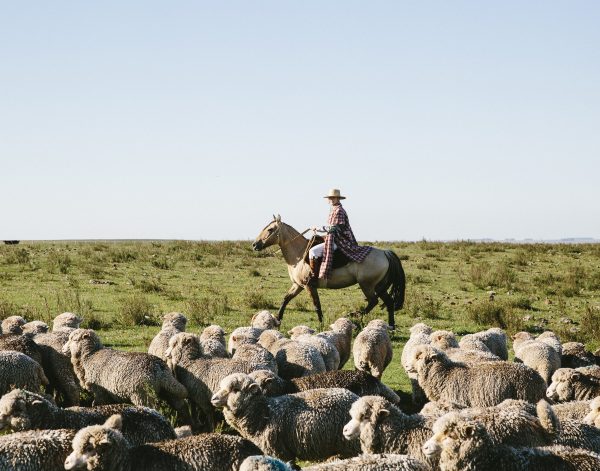
 Power couple: Gabriela and Austin Hearst
Power couple: Gabriela and Austin Hearst My two favorite looks from the Gabriela Hearst F/W 2020 runway.
My two favorite looks from the Gabriela Hearst F/W 2020 runway. Wearing Gabriela Hearst dress and Nina bag
Wearing Gabriela Hearst dress and Nina bag
 My lovely host, Kathrin Genovese Head Vice Chairmen Office, Global Ultra High Net Worth
My lovely host, Kathrin Genovese Head Vice Chairmen Office, Global Ultra High Net Worth From left to right: Christina Dean, my humble self, Giorgia Caovilla and Elisabeth von Thurn und Taxis.
From left to right: Christina Dean, my humble self, Giorgia Caovilla and Elisabeth von Thurn und Taxis.
 Designer Mary Katrantzou and me framed by UBS key speakers, James Gifford, Senior Impact Investing Strategist, Chief Investment Office, UBS Wealth Management, to the left and Helen Brand, Head of Equity Research, European Luxury Goods, UBS Investment Bank
Designer Mary Katrantzou and me framed by UBS key speakers, James Gifford, Senior Impact Investing Strategist, Chief Investment Office, UBS Wealth Management, to the left and Helen Brand, Head of Equity Research, European Luxury Goods, UBS Investment Bank A woman shops in a Louis Vuitton store in Shanghai. © SCMP Photos
A woman shops in a Louis Vuitton store in Shanghai. © SCMP Photos
 Great show: Mary Katrantzou’s F/W 2017 presentation took place at Tate Modern.
Great show: Mary Katrantzou’s F/W 2017 presentation took place at Tate Modern. With Erdem in his Mayfair store for a private shopping event during the «Economy of Fashion».
With Erdem in his Mayfair store for a private shopping event during the «Economy of Fashion». With Mary Katrantzou in the private shopping suite at the at the Connaught Hotel in Mayfair, wearing an amazing coat from her F/W 2017 collection.
With Mary Katrantzou in the private shopping suite at the at the Connaught Hotel in Mayfair, wearing an amazing coat from her F/W 2017 collection. Success from the first moment: Mary Katrantzou’s graduate collection in 2008.
Success from the first moment: Mary Katrantzou’s graduate collection in 2008. Best of both worlds… fashion and finance.
Best of both worlds… fashion and finance.